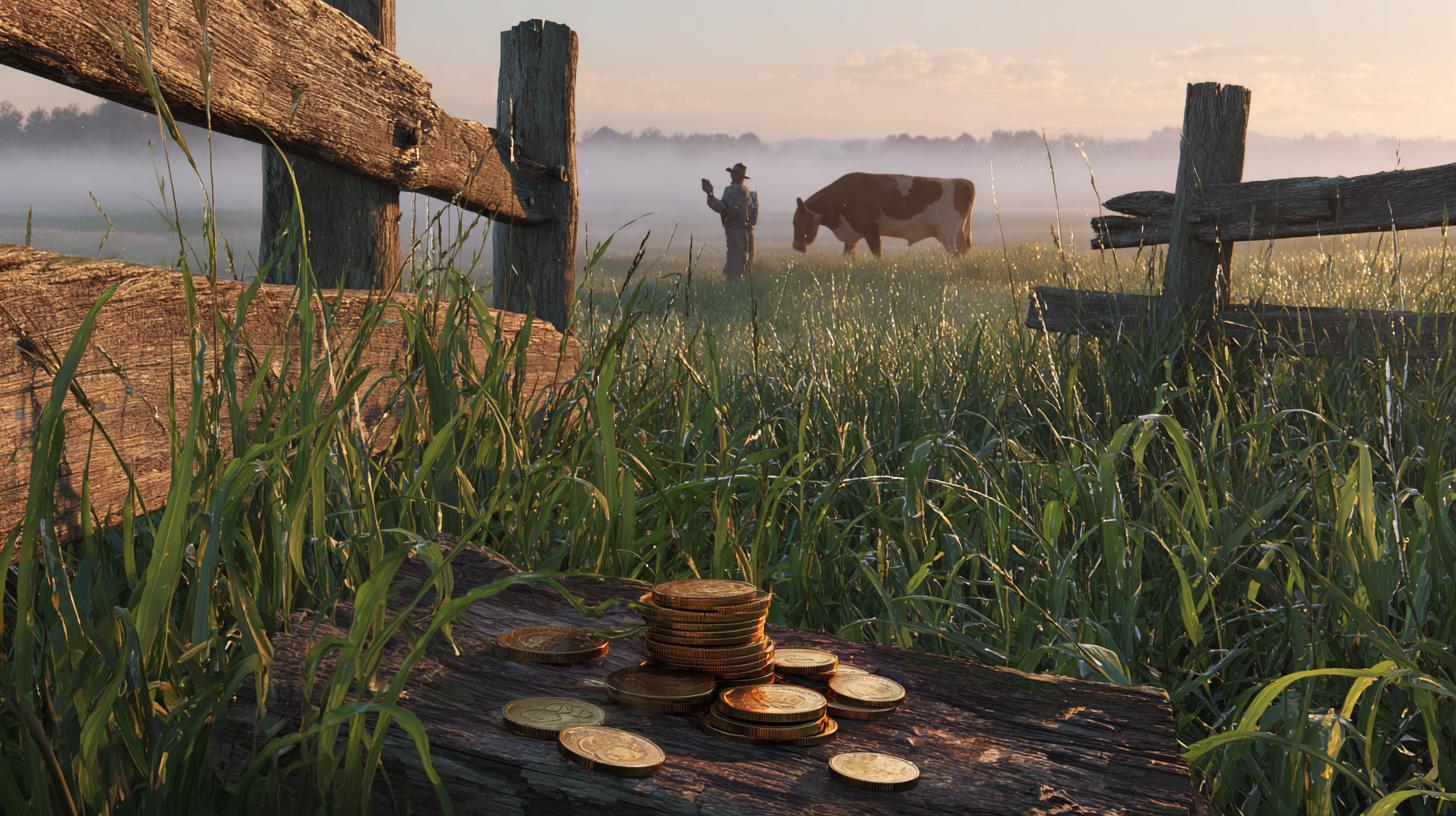Grow Your Wealth: Unlocking Passive Income with Grass
Imagine turning your humble pasture into a consistent revenue stream without clocking extra hours on the farm. That’s the beauty of passive income with grass—a creative, low-maintenance way to grow your bank balance while nature does most of the work. Whether you own a few acres or manage a sprawling estate, grass-based ventures can diversify your portfolio and deliver steady earnings year after year. In this article, we’ll explore proven strategies, real-world case studies, and expert tips so you can confidently embark on your grass-driven income journey. Ready to see how a simple green field can become your next goldmine? Keep reading to learn the secrets behind making grass work for you.
Understanding Passive Income with Grass
Passive income with grass refers to revenue generated from grassland assets with minimal ongoing effort. Unlike traditional farming, where daily chores dominate your schedule, grass-based models often require strategic planning and occasional maintenance only. This concept capitalizes on natural processes—grazing, hay growth, and renewable energy—allowing landowners to earn money while focusing on other pursuits. By leveraging grazing leases, hay sales, or even biogas production, your pastures become active financial partners. Embracing this approach can free up your time, spread risk, and transform idle land into a sustainable profit center.
Key Benefits of Earning Passive Income with Grass
- Low Maintenance: Once set up, grass leases and hay systems demand limited oversight.
- Diversification: Spread financial risk by adding grass-based revenue to existing income streams.
- Sustainability: Properly managed grass supports soil health, carbon capture, and biodiversity.
- Scalability: Expand easily by adjusting acreage or adding new services like seed production.
- Predictable Cash Flow: Fixed lease rates or regular hay harvests yield consistent returns.
Top Strategies to Generate Passive Income with Grass
Leasing Grazing Land to Local Farmers
One of the simplest ways to earn passive income with grass is leasing pastureland to ranchers or hobby farmers. You negotiate a per-acre rate or flat monthly fee, collect rent, and handle occasional fence repairs or rotation planning. This arrangement ensures a predictable check every billing cycle and shifts livestock care responsibilities to the tenant. Before signing contracts, conduct a soil test and confirm water access to justify your pricing and attract reliable lessees.
Hay Production and Storage
Harvesting and selling hay transforms seasonal grass growth into year-round revenue. After mowing and baling, you can either sell directly to equine centers, dairy farms, and local feed stores or offer storage services for other producers. Investment in quality balers and climate-controlled storage pays off through higher market prices during off-peak seasons. Promote your hay on local classifieds and social media to build recurring customers who value convenience and quality.
Developing Grass-Fed Livestock Partnerships
Partnering with grass-fed beef or lamb producers lets you share in the profits without raising animals yourself. You supply the pasture, they handle livestock care and marketing, and you split the revenue or charge a pasture usage fee. This symbiotic relationship leverages each party’s strengths and fosters long-term collaboration. Draft a clear agreement on grazing rotation, veterinary costs, and slaughter timelines to avoid future conflicts and secure reliable cash flow.
Grass-Based Biogas and Renewable Energy
For those willing to explore innovative avenues, grass can feed biogas digesters, producing renewable energy and organic fertilizer as byproducts. Agricultural digesters convert grass clippings and silage into methane, which powers generators or heats facilities. Feedstock can come from on-site mowing or purchased from neighbors, creating a community energy hub. While initial investment is higher, government grants and carbon-credit programs often offset setup costs, making this a lucrative long-term venture.
Case Studies: Success Stories of Passive Income with Grass
Midwest Hay Farm Success
In Iowa, the Thompson family turned 120 acres of underutilized pasture into a thriving hay enterprise. By investing in precision baling equipment and a small storage shed, they increased yields by 30% and commanded premium prices from organic dairy farms. Today, their hay operation brings in over $50,000 annually with just three weeks of seasonal oversight.
Urban Grazing Lease in the UK
Near London, entrepreneur Sarah Fields leases a half-acre plot to local goat owners for ornamental grazing. Her creative take on “lawn mowing” has brought in a steady £500 per month and attracted media attention for its eco-friendly flair. A simple water trough installation and durable fencing were all she needed to launch this niche passive income with grass venture.
Challenges and How to Overcome Them
- Weather Variability: Drought or excessive rain can impact growth. Mitigate risk with irrigation systems and flood-tolerant grass species.
- Pest and Weed Control: Regular scouting and targeted herbicide use prevent invasive species from taking over valuable pasture.
- Initial Capital: Equipment and fencing costs add up. Explore leasing machinery or applying for agricultural grants.
- Regulatory Compliance: Local zoning or environmental rules may apply. Consult extension offices and draft clear lease agreements.
Getting Started: Tips for Beginners
- Conduct thorough market research to identify local demand for hay, livestock grazing, or renewable energy feedstock.
- Test your soil and water quality to select the right grass species and ensure strong, healthy growth.
- Draft clear leases and partnership agreements, outlining responsibilities, payment terms, and maintenance schedules.
- Invest in durable fencing, water systems, and storage facilities to protect your asset and increase property value.
- Build relationships with local farmers, feed stores, and extension services to unlock new opportunities and expert advice.
Your Next Step on the Path to Profitable Pastures
Ready to sow the seeds of long-term wealth? Whether you’re leasing grazing land, baling premium hay, or joining the renewable energy revolution, passive income with grass offers a green solution to financial growth. Take action today: evaluate your acreage, draft a simple lease template, or reach out to local ag experts for guidance. Join the growing community of landowners who are turning blades of grass into reliable cash flow—one pasture at a time.


Comments are closed